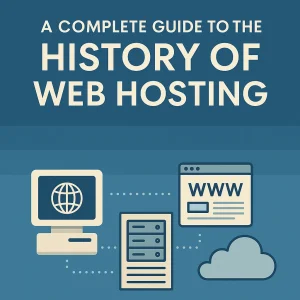What’s that, you say? This week’s topic may seem a little ‘surreal’, but there is, in fact, such a thing as a zombie server and there’s increasing numbers of them out there draining away power and resources that could otherwise be put to more productive purposes.
It’s certainly a power efficiency problem, but it’s also an environmental problem as well as a capital resource problem. Zombie servers have now become a major hassle for data centres around the world. Comatose devices running with no external communications or visibility, and contributing nothing in the way of computer resources.
Here at 4GoodHosting, we like to think that staying on top of major trends in the industry is a big part of what makes us a good Canadian web hosting provider. And considering that estimates now suggest that there are over 10 million zombie servers worldwide, this is definitely one that we’d prefer to never be discussing again.
These 10 million+ servers are wasting the equivalent of the electrical power generated by eight major power plants. Reliable research indicates that 30% of servers are comatose, and that means that almost one-third of capital in enterprise data centres is squandered. Then you add the security risk posed by zombie servers because of how they aren’t patched or maintained.
The Horde is Growing
It’s a fact that identifying a zombie server isn’t easy, and particularly for those who don’t interact with them frequently or extensively. More and more data centres with hundreds and thousands of comatose servers are completely unaware of the power these devices eat up. Many of these ‘zombies’ remain anonymous, devouring energy while providing no real active function.
Example of their evil ways include dozing off for months at time, generating heat for no real reason, and accelerating the power meter simply for the sake of doing so. And more often than not the only way to identify them is to walk up down the aisles of a data centre with a clipboard taking notes of the transgressors. That’s something few operations managers have the time to do.
Consider as well that another massively problematic issue related to these zombie servers is the physical space they take up. Keep in mind that servers are huge machines that occupy precious and often pricey real estate in city centres. Hyperscalers understand this and are pushing forward to design the most energy-efficient data centres. For example, in 2011, Facebook launched the Open Compute Project. The initiative to rethink and re-implement hardware design was prompted by the company’s determination to design a data centre that could handle unprecedented scale, while being cost-controlled.
Taking that lead, Apple has announced plans to build a $1.3 billion, state-of-the-art data centre that will be located in less-pricey Iowa and run entirely on renewable energy. In this era of energy-consciencous data centre operations, it seems we’re finally taking aim at zombie servers.
Rabid Consumption
Data centres around the globe host vast and ever-growing silos of information. Supplying the needed energy for these centres has become a MAJOR expense. Long story short, tens of billions of dollars are wasted on these walking dead, and eliminating them would free up some 2 gigawatts to support new IT loads performing real work instead of wasting electricity and space.
A 2012 investigation turned up some 20,000 zombie servers. Shutting them down resulted in a 5 megawatt reduction in IT load and an additional 4 megawatt drop in cooling and infrastructure load. If we put these savings in a global context, eliminating all the zombie servers around the world might just create a 4 gigawatts of combined IT and infrastructure load reduction. All of this redirect able infrastructure could support new IT loads that deliver real work instead of simply wasting electricity and space.
This is a big deal no matter how you want to look at it, especially when it’s estimated that U.S. data centres consume over 91 billion kilowatt-hours of electrical energy on average each year. By 2020 that number is expecting to jump by 53%. Eliminating zombie servers and boosting energy efficiency could cut electrical usage by 40%, and it’s really something that’s both necessary and attainable.
Time to Go
Fortunately, energy remains the one cost data centres can reduce via proper facilities design and management. Some centres have taken the lead in finding, waking up, or shutting down zombie servers. Proper facility management means many servers that are no longer needed can be identified and shut down, while others are oriented to now run their software on the cloud. It’s quite telling when some companies report cutting their energy consumption by over a third by taking these steps.
Any operations manager that’s up for that challenge will find that it takes a coordinated effort to see these energy savings happen. Only an IT technician will know which devices can remain live, and which ones can be turned off. Those decisions should only be made by a person who is explicitly in the know and entirely aware of what they’re doing! We’ll need both of them walking the server tunnels, and making a joint decision on which zombies get their plugs pulled.
Unfortunately, this day or reckoning rarely comes for most of the zombie servers.
Yes, data centres are eager to solve the problem, but they’re impeded by the need to keep idle servers running lest they accidentally make a mission critical server inoperative. Yes, in many cases the zombies are kept alive ‘just in case’ there’s been an error in their identification.
Some new data centre tools, however, allow their operators to easily spot and shut down zombie servers, and that includes physical, virtual or even cloud versions. Doing so creates a dramatic improvement in the sustainability of their infrastructure, with a marked increase in both economic and environmental efficiencies. Next-generation software can optimize on-premises infrastructure, including IT servers, storage and network, plus virtual machines (VMs) and off-premises cloud constructions.
We’ll guess the majority of data centres will keep their heads in the sand about zombie servers. Some may continue to attack the problem with half-hearted combat efforts - shutting down a server here and there - but not really making much of a dent in the problem. Without a truly holistic and far-reaching approach to the problem, the efficiency and very existence of many of these data centres may eventually fall victim to the undead hordes of the web computing world.















